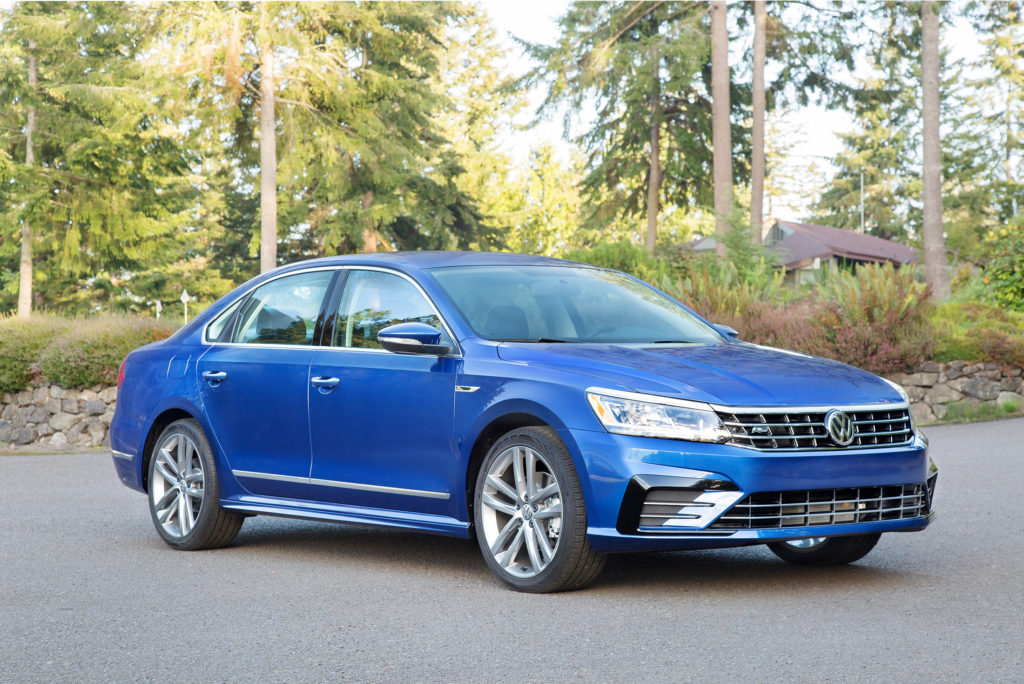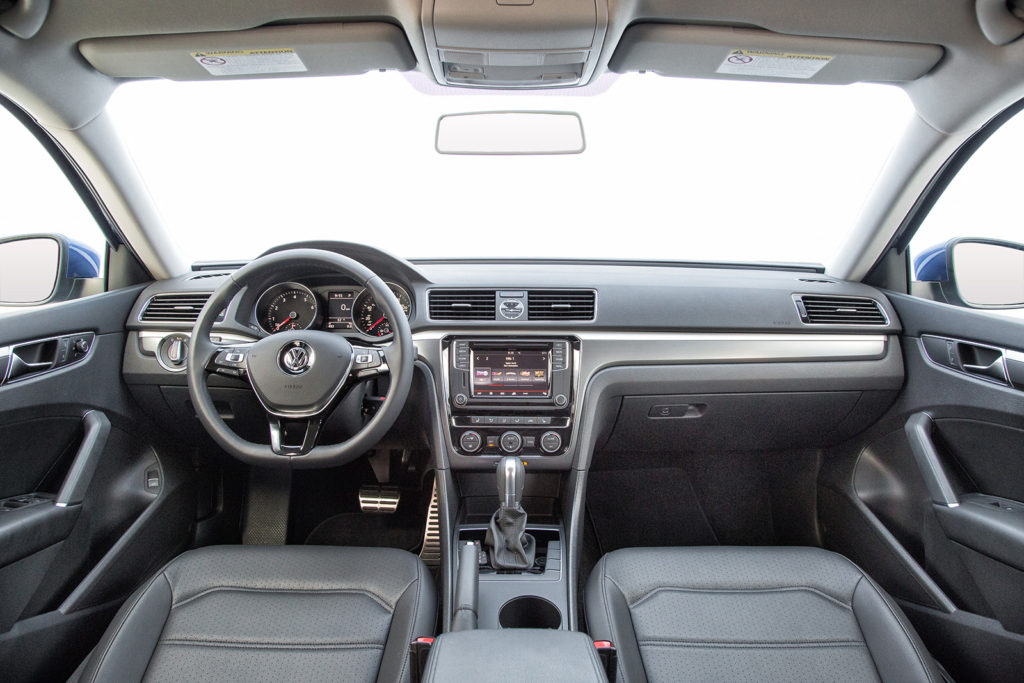Cargazing
By Derek Price
When people want a roomy, comfy, American-style sedan, it’s ironic that the American brands have all but eliminated that type of car.
It’s not uncommon for me to hear someone say they want to replace their big ol’ Buick LeSabre, for example, but can’t find anything comparable at the dealerships today. Nobody makes that style of sedan anymore, with a syrupy suspension and front seats like media-room recliners.
The closest thing you can get to that old-style Buick these days is the Toyota Avalon.
But now I’ve got another surprising place to send those comfort-seeking buyers: their local Volkswagen dealer.

The 2017 Volkswagen Passat offers a lot of space and comfort for the money, starting around $22,000.
The VW Passat checks a lot of the same boxes as a classic American sedan. It’s got a spacious back seat, cavernous trunk and wide but supportive seats that don’t pinch your sides in place like so many sporty cars do these days.
While the Passat is technically considered a mid-size car, it doesn’t feel that way in person. It looks and drives more like a full-size sedan, with an impressive amount of knee room for back-seat passengers and good isolation from road and wind noise.
Even more importantly, it’s not priced for the luxury market.
While grandpa’s favorite car, the Avalon, starts over $33,000 and seems to be aimed at a higher-end market now, the Passat starts in the more budget-friendly $22,000 range. That’s also considerably less than the roughly $27,000 starting point of the Ford Taurus and Chevrolet Impala.
My Passat tester seemed like a good value, ringing up under $25 grand with dual-zone climate control, heated seats, blind-spot monitors, a 6.3-inch touchscreen display, automatic headlights and 19-inch wheels. The R-Line trim gave it a sportier look with a chrome exhaust tip, special bumpers and grille, and unique interior trim.
I also was glad to see it came with Apple CarPlay and Android Auto, something I appreciate as a smartphone junkie.
The one thing I wish the Passat could change is a difficult thing to quantify: its personality. It feels bland in some ways — straight lines and smooth panels on the body, a driving feel that’s oh-so-ordinary — and doesn’t quite fit in with Volkswagen’s otherwise spunky, youthful lineup.
Power comes from your choice of a 1.8-liter, 170-horsepower four-cylinder engine or a 280-horsepower V6.

The Passat’s cabin looks sleek and contemporary with lots of horizontal lines and tasteful chrome trim.
After a major refresh in 2016, the changes this year are relatively minor.
The biggest news is the addition of forward collision warning and autonomous emergency braking as standard features on all Passat trim levels. The system uses radar sensors to detect a possible collision. It warns the driver if it senses a wreck is imminent and automatically applies the brakes if the driver doesn’t react.
Volkswagen is also taking some connectivity and convenience features and pushing them down to lower trim levels this year, letting buyers get a bit more content for the money. The SE trim, for example, adds keyless access with pushbutton start and a blind spot monitor with rear cross traffic alert.
Another addition is the new V6-powered “SE with Technology” model.
Pricing for the Passat starts at $22,440, including an automatic transmission on the 1.8T S model. The range tops out at $33,995 for the luxury-oriented V6 SEL Premium trim.
At A Glance
What was tested?
2017 Volkswagen Passat 1.8T R-Line ($23,975). Options: None. Price as tested (including $820 destination charge): $24,795
Wheelbase: 110.4 in.
Length: 191.9 in.
Width: 72.2 in.
Height: 58.5 in.
Engine: 1.8-liter four cylinder (xxx hp, xxx ft. lbs.)
Transmission: Six-speed automatic
Fuel economy: 23 city, 34 highway
RATINGS
Style: 6
Performance: 7
Price: 9
Handling: 6
Ride: 7
Comfort: 8
Quality: 6
Overall: 7 d
Why buy it?
The Passat offers a lot of space for the money. With a roomy back seat and huge trunk, it feels more like a full-size than mid-size sedan.
